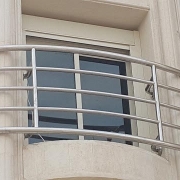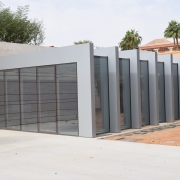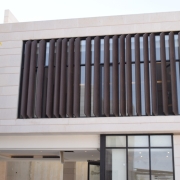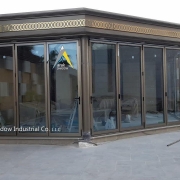With the global shift towards sustainability and energy conservation, selecting the right building materials has become a crucial factor in improving energy efficiency and reducing operational costs. Among these materials, insulating woods play a key role in enhancing a building’s thermal performance, minimizing the need for artificial heating and cooling. Thanks to their natural properties, insulating woods provide sustainable and effective solutions for both residential and commercial buildings, improving thermal comfort while reducing carbon emissions.
In this article, we will explore how insulating woods contribute to energy efficiency in buildings, their types, applications, and the environmental and economic benefits they offer.
Properties of Insulating Woods and Their Impact on Energy Efficiency
Insulating woods possess several characteristics that make them an ideal choice for energy-efficient construction, including:
- Natural Thermal Insulation Ability
- Wood fibers have a porous structure containing tiny air pockets that act as a natural thermal barrier, reducing heat transfer between indoor and outdoor spaces.
- Moisture Absorption and Temperature Regulation
- Wood helps maintain thermal balance inside buildings by absorbing excess moisture and releasing it when needed, improving indoor air quality.
- Reduced Dependence on HVAC Systems
- Proper use of insulating woods in walls and roofs can significantly decrease reliance on heating and cooling systems, leading to lower energy consumption.
- Environmental Sustainability
- Wood is a renewable and recyclable material, making it a more eco-friendly alternative to synthetic insulating materials such as polystyrene.
Types of Insulating Woods Used in Construction
There are several types of insulating woods used to enhance energy efficiency in buildings, including:
- Wood Fiber Boards
- Made from recycled wood shavings, these boards provide excellent thermal and sound insulation.
- Cork Wood
- Known for its flexibility and lightweight properties, cork is used for insulating walls, ceilings, and floors.
- Solid Wood (e.g., Pine and Oak)
- Naturally insulating, solid wood is often used in exterior walls and flooring.
- Cross-Laminated Timber (CLT)
- Multi-layered wooden panels that serve as an alternative to concrete walls, offering superior thermal insulation.
Applications of Insulating Woods in Buildings
- Wall Insulation (Interior and Exterior)
- Using insulating wood panels instead of traditional bricks can help reduce heat loss in winter and heat gain in summer.
- Roof and Floor Insulation
- Incorporating layers of cork or wood fiber between floors and ceilings prevents heat transfer and enhances soundproofing.
- Insulated Wooden Windows and Doors
- Designing windows and doors with reinforced wood materials helps improve a building’s thermal insulation.
- Advanced Wooden Structures
- Modern construction techniques, such as CLT structures, combine strength, durability, and excellent thermal insulation properties.
Economic and Environmental Benefits of Insulating Woods
1. Lower Energy Bills
- Insulating woods reduce electricity consumption for heating and cooling by up to 30-50%, leading to lower operational costs.
2. Enhanced Thermal Comfort
- Wood maintains a stable indoor temperature, reducing thermal fluctuations and improving overall comfort for occupants.
3. Reduced Carbon Footprint
- Insulating woods lower greenhouse gas emissions, as they absorb carbon dioxide during tree growth, making them a sustainable choice.
4. Improved Indoor Air Quality
- Wood purifies indoor air and regulates humidity levels, preventing mold and bacteria growth.
5. Increased Property Value
- Energy-efficient buildings are more attractive to investors and buyers, increasing their market value.
Challenges of Using Insulating Woods in Construction
Despite their numerous benefits, some challenges should be considered when using insulating woods:
- Higher Initial Costs
- Some insulating woods are more expensive than conventional materials, but they offer significant long-term savings.
- Additional Fire Resistance Treatment
- Certain wood types require fire-resistant treatments to ensure safety in buildings.
- Vulnerability to Pests and Moisture
- Protective coatings must be applied to prevent insect infestations and mold growth over time.
Successful Applications of Insulating Woods in Architectural Projects
- Green Buildings in Scandinavian Countries
- Nations like Sweden and Finland widely use insulated wooden structures to reduce energy consumption in buildings.
- Modern Wooden Skyscrapers
- Some major cities have begun constructing high-rise buildings using insulated wood, such as the “Mjøstårnet” project in Norway, the tallest wooden tower in the world.
- Sustainable Villas in Saudi Arabia
- In luxury residential projects, CLT panels and wood fiber boards are used to enhance thermal insulation and reduce cooling costs.
Insulating woods are one of the most effective modern solutions for improving energy efficiency in buildings, offering a combination of natural beauty, sustainability, and thermal performance. By choosing the right types of wood and using them correctly, energy consumption can be significantly reduced, indoor comfort can be enhanced, and the environment can be preserved. As the construction sector evolves, insulating woods will remain a key component in creating more efficient and sustainable buildings in the future.












Leave a Reply
Want to join the discussion?Feel free to contribute!